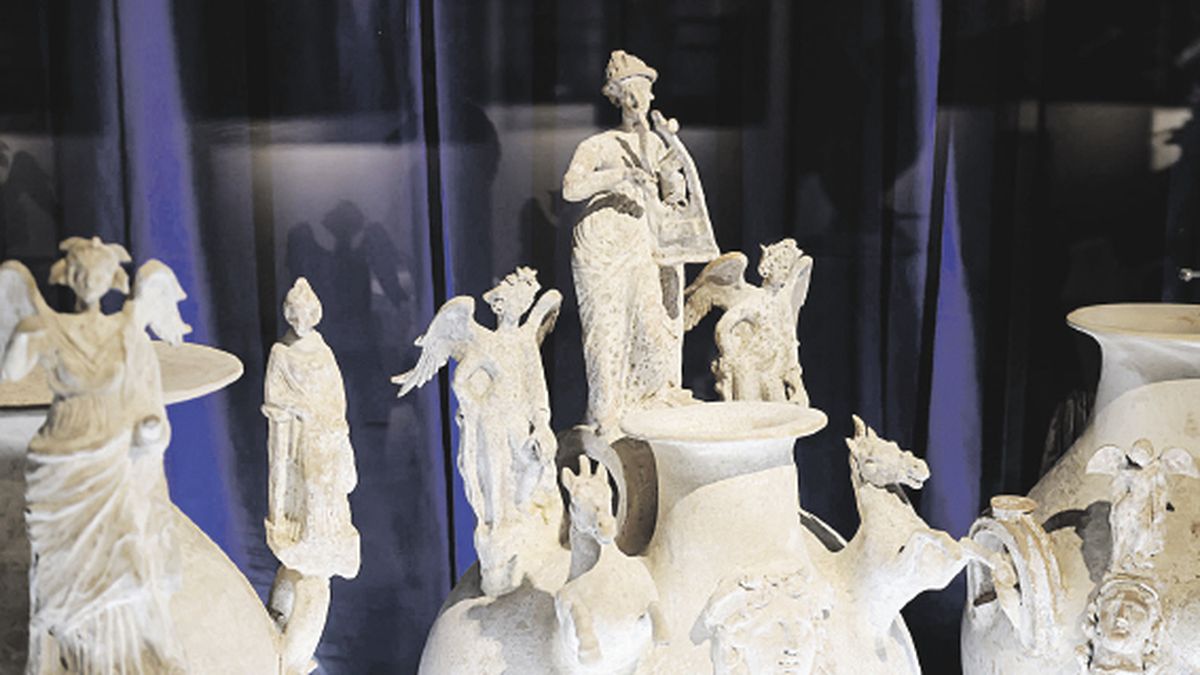Shapes and Colors of pre-Roman Italy Canosa di Puglia is displayed in the Italian Institute of Culture under the curatorship of Massimo Osannageneral director of Museums of the Italian Ministry of Culture and Luca MércuriGeneral Director of Museums of Puglia.
About 100 original archaeological pieces belonging to the Daunia culture between the 4th century and the 2nd century BC. C., itinerant sign that he was already in Santiago de Chile and subsequently to its exhibition in Buenos Aires will go to San Pablo and Mexico City.
The selected works come from the deposits of the National Archaeological Museum of Canosa di Puglia and from the collections of the National Museum of Taranto, from the deposits of Foggia and Barletta Andria– Trani, from the Archaeological Museum of Santa Escolastica (Bari). This exhibition is part of the cultural heritage valorization and promotion program called “Narrating beauty” (Il racconto della beauty).
Before the unification that occurred under Roman domination, the Italian peninsula was inhabited by numerous peoples, very different from each other from a cultural point of view.
In the second half of the 7th century BC. C. live together Puglia Greek settlers who had previously founded Taranto; the Mesapios in the south of the region and the Dauns in the northernmost part whose culture is shown through armor, ceramics, jewelry and ornaments.
Between 4th and 2nd centuries BC. c. the so-called princes, belonging to the local elite They were buried in hypogeums (chamber tombs, excavated in the local tuff stone with rich funerary goods that revealed their economic and cultural status).
Most objects come from these unique and unpublished funerary trousseau for its vibrant shapes and colors that are displayed in specially illuminated showcases.
Large red-figure vases showing an original appropriation of a pottery technique brought from Greece, used in Taranto. There are also other objects of daily use that shed light on an important historical period of ancient Apuliaprior to the arrival of the Romans.
With a didactic criterion there are plaques with writings in which the opulences of the Canosa aristocrats that refer to both the feminine and masculine spheres.
Jewelry and ornaments in precious metals, ointments and perfumed oils were intended for body and hair care. He head-shaped jug feminine of the Varrese hypogeum is an image of the time with hairstyles and ornaments from the fashion of Magna Graecia. The trousseau, reduced, compared to the previous two centuries, allows us to recognize the progressive assimilation of the typical funerary aspects of the rome culture with which the aristocracy of Gray-haired had formed alliances since year 318 BC. c.
As for the masculine sphere, there are armor, spearheads, and spits that refer to the community meat consumption. The male character is accompanied on his journey to the afterlife by his weapons and also by vases decorated with the traditional geometric motifs of the Daunia culture and red figures of Apulia.
A sample refined in its conception, very instructive of very distant cultures that followed Greek influencesbut that can be identified in some aspects with contemporaneity, ornaments, body care, perfumes, especially in the feminine sphere.
(Marcelo T. de Alvear 1119. Monday to Thursday from 10 a.m. to 7 p.m. Friday from 10 a.m. to 4 p.m. Free admission. Closing on February 14).
Source: Ambito
I am an author and journalist who has worked in the entertainment industry for over a decade. I currently work as a news editor at a major news website, and my focus is on covering the latest trends in entertainment. I also write occasional pieces for other outlets, and have authored two books about the entertainment industry.




